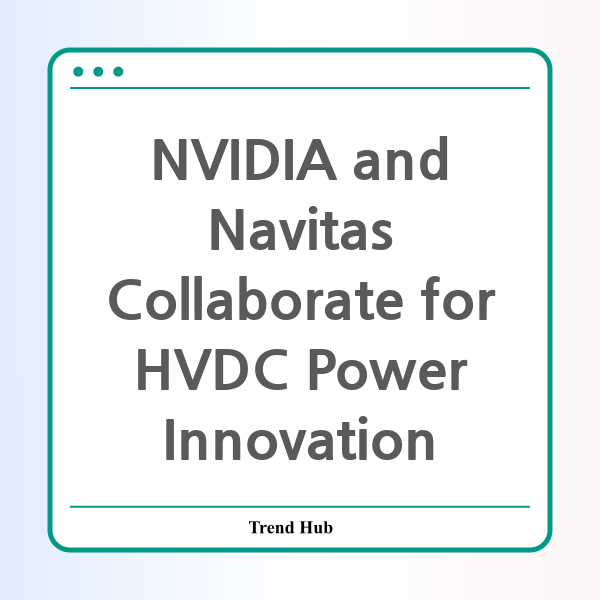* This website participates in the Amazon Affiliate Program and earns from qualifying purchases.

How is NVIDIA teaming up with Navitas Semiconductor to revolutionize data center power infrastructure?
The landscape of AI and data center operations is undergoing a seismic shift, and at the forefront is NVIDIA's recent collaboration with Navitas Semiconductor. This partnership aims to pioneer an advanced 800 V high-voltage direct current (HVDC) architecture that could significantly enhance power delivery and efficiency for next-generation data centers.
Navitas Semiconductor, recognized as a leader in GaN (gallium nitride) and SiC (silicon carbide) technologies, was selected by NVIDIA to support the power infrastructure needed for the company's ambitious AI projects, specifically its ‘Kyber’ rack-scale system. This collaboration promises to transform how data is processed, stored, and managed in the increasingly demanding environments of modern AI workloads.
Traditionally, data centers have relied on a 54 V in-rack power distribution system, which poses various limitations, particularly when power requirements surpass 200 kW. The existing setup necessitates cumbersome copper busbars, which can lead to inefficiencies and increased operational costs. With the advent of NVIDIA's 800 V HVDC architecture, this antiquated system is being challenged, as it facilitates direct power conversion from the grid, bypassing the conventional AC/DC conversion stages.
Why is 800 V HVDC Architecture a Game Changer?
The shift to 800 V HVDC is not merely a technical upgrade; it paves the way for enhancing overall system efficiency. By increasing the voltage while reducing the current, Navitas’ technology allows for the use of thinner copper wiring, diminishing the need for extensive copper resources—up to 45% savings in thickness. This is particularly crucial as data centers shift towards gigawatts of power demand to support AI performance.
In practical terms, this means that the infrastructure's operational costs can be dramatically reduced. NVIDIA anticipates that by transitioning to the new architecture, maintenance costs could plummet by as much as 70%. Such an improvement is significant for companies striving for operational excellence amidst growing competition in AI technologies.
Market Reaction and Future Outlook
As a result of this collaboration, there has been an interesting performance shift in Navitas Semiconductor's stock (Nasdaq: NVTS). Following the announcement, shares witnessed an impressive movement, bouncing back from previous lows. The stock closed at $1.91 before the announcement and surged to around $4.98 shortly after, highlighting the market's optimism regarding the partnership and future revenue potential.
Despite this bullish sentiment, Navitas has faced challenges. The company reported an adjusted EPS of -$0.06 on revenues of $14.02 million—down 39.5% year-on-year. However, the collaboration with NVIDIA may represent a timely turning point, providing a pathway to recover from current financial hurdles. With current assets significantly outweighing liabilities, Navitas is strategically positioned to leverage this partnership effectively.
This collaboration could herald a new era for both NVIDIA and Navitas, marking a significant step forward in how data centers operate, ultimately paving the way for more efficient, high-performing technology infrastructures. Investors and stakeholders alike will be watching closely to see how these advancements unfold in the coming months and years.
* This website participates in the Amazon Affiliate Program and earns from qualifying purchases.